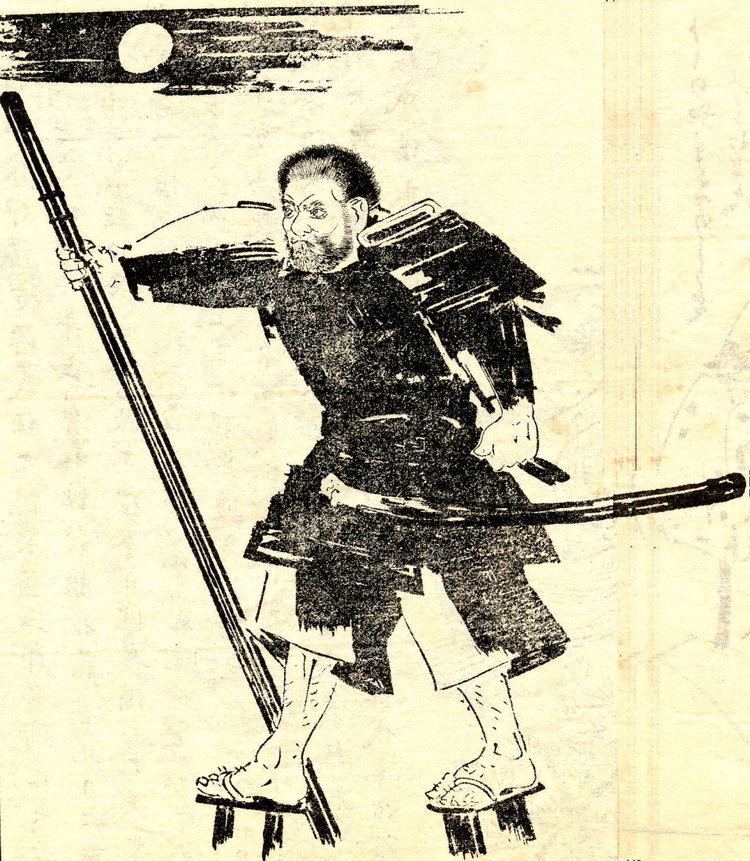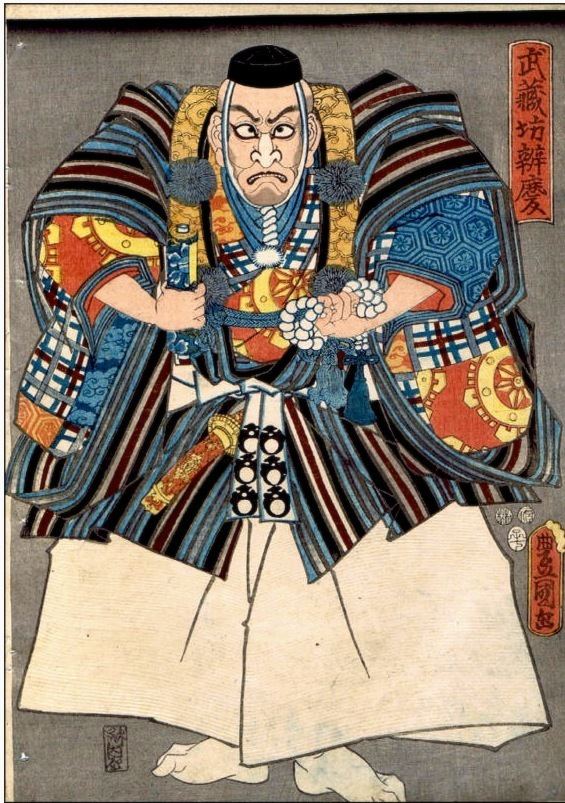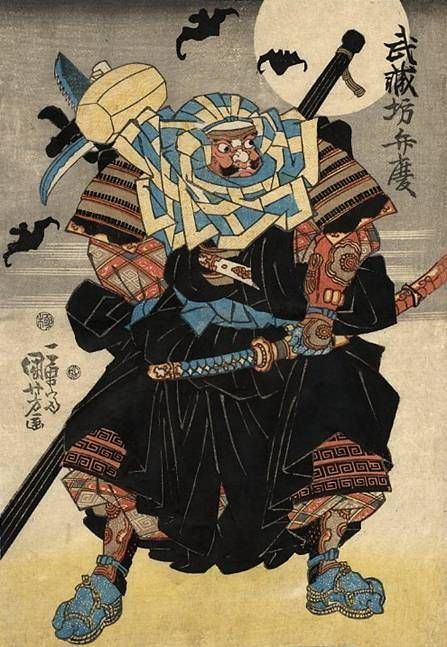 | ||
Died 1189, Hiraizumi, Iwate Prefecture, Japan Name Musashibo Benkei Similar People Minamoto no Yoshitsune, Minamoto no Yoritomo, Shizuka Gozen, Miyamoto Musashi, Nasu no Yoichi | ||
1939 Benkei Tai Ushiwaka
Musashibō Benkei (武蔵坊弁慶, 1155–1189), popularly called Benkei, was a Japanese warrior monk (sōhei) who served Minamoto no Yoshitsune. He is commonly depicted as a man of great strength and loyalty, and a popular subject of Japanese folklore.
Contents
- 1939 Benkei Tai Ushiwaka
- Yoshitsune vs benkei great duel
- Early life
- Seven Famous Weapons
- Career
- Death
- Adaptions
- References

Yoshitsune vs benkei great duel
Early life

Stories about Benkei's birth vary considerably. One tells how his father was the head of a temple shrine who had raped his mother, the daughter of a blacksmith. Another sees him as the offspring of a temple god. Many give him the attributes of a demon, a monster child with wild hair and long teeth. In his youth, Benkei may have been called Oniwaka (鬼若)—"demon/ogre child", and there are many famous ukiyo-e works themed on Oniwakamaru and his adventures. He is said to have defeated 200 men in each battle he was personally involved in.

He joined the cloister at an early age and travelled widely among the Buddhist monasteries of Japan. During this period, monasteries were important centres of administration and culture, but also military powers in their own right. Like many other monks, Benkei was probably trained in the use of the naginata. At the age of seventeen, he was said to have been 2m tall. At this point, he left the Buddhist monastery and became a yamabushi, a member of a sect of mountain ascetics who were recognisable by their black caps. Japanese prints often show Benkei wearing this cap.
Seven Famous Weapons

Benkei armed himself with seven weapons, and may be depicted carrying these on his back. In addition to his sword he carried a broad axe (masakari), a rake (kumade), a sickle (nagihama), a wooden mallet (hizuchi), a saw (nokogiri), an iron staff (tetsubō), and a half-moon spear (naginata).
Career

Benkei is said to have posted himself at Gojō Bridge in Kyoto, where he disarmed every passing swordsman, eventually collecting 999 swords. On his 1000th duel, Benkei was defeated by Minamoto no Yoshitsune, a son of Minamoto no Yoshitomo. Henceforth, he became Yoshitsune's retainer and fought with him in the Genpei War against the Taira clan. Yoshitsune is credited with most of the Minamoto clan's successes against the Taira, especially the final naval battle of Dannoura. After their ultimate triumph, however, Yoshitsune's elder brother Minamoto no Yoritomo turned against him.

From 1185 until 1189, Benkei accompanied Yoshitsune as an outlaw. In the end, they were encircled in the castle of Koromogawa no tate. As Yoshitsune retired to the inner keep of the castle to commit ritual suicide (seppuku) on his own, Benkei fought on at the bridge in front of the main gate to protect Yoshitsune. It is said that the soldiers were afraid to cross the bridge to confront him, and all that did met swift death at the hands of the gigantic man, who killed in excess of 300 fully trained soldiers.
Death
Realizing that close combat would mean suicide, the Minamoto no Yoritomo warriors decided to shoot and kill Benkei with arrows instead. Long after the battle should have been over, the soldiers noticed that the arrow-riddled, wound-covered Benkei was standing still. When the soldiers dared to cross the bridge and look more closely, the giant fell to the ground, having died standing upright. This is known as the "Standing Death of Benkei" (弁慶の立往生, Benkei no Tachi Ōjō).
Adaptions
It is Benkei's loyalty and honour which makes him most attractive in Japanese folklore. One kabuki play places Benkei in a moral dilemma, caught between lying and protecting his lord in order to cross a bridge. The critical moment of the drama is its climax, where the monk realises his situation and vows to do what he must. In another play, Benkei even slays his own child to save the daughter of a lord. In the Noh play Ataka, Benkei must beat his own master (disguised as a porter) in order to avoid breaking his disguise. Ataka is later adapted as the kabuki play Kanjinchō, and filmed by Akira Kurosawa as The Men Who Tread on the Tiger's Tail.
